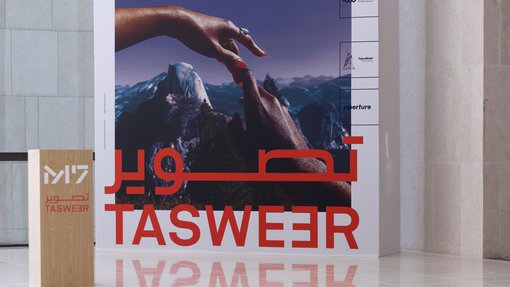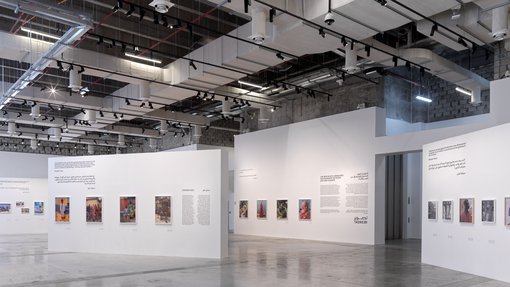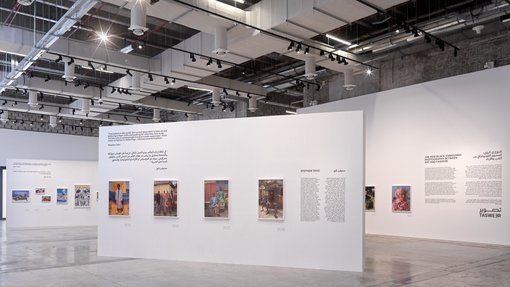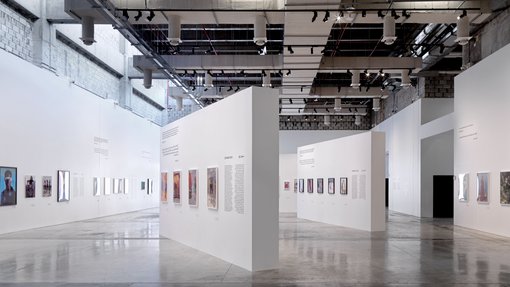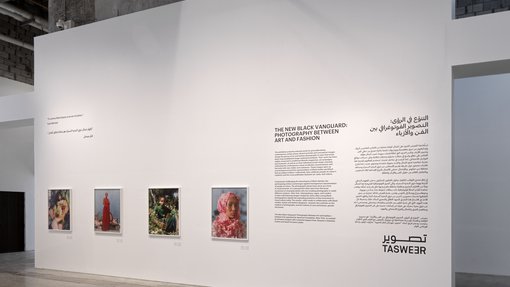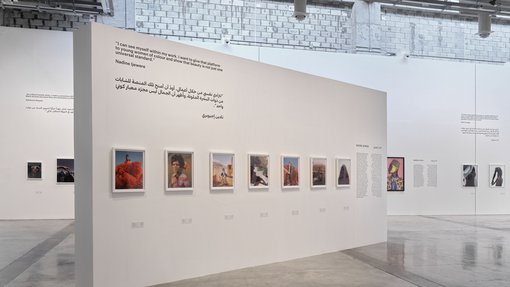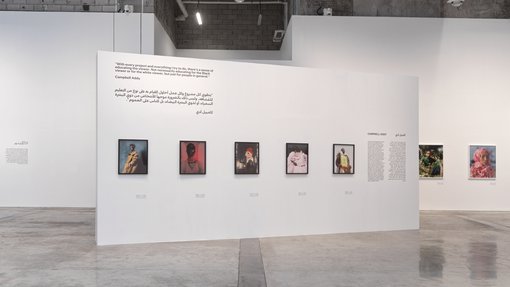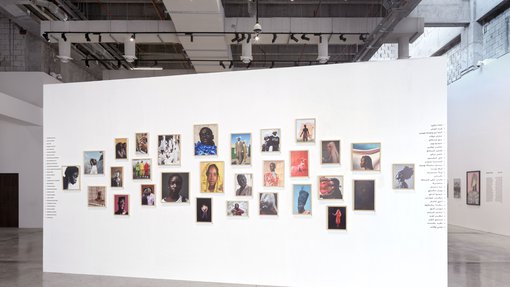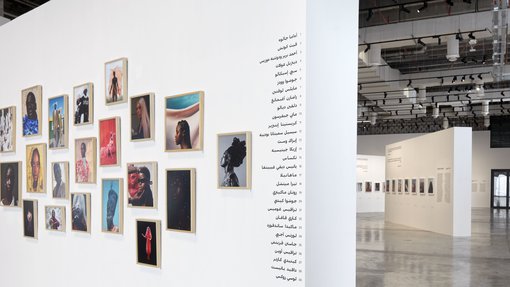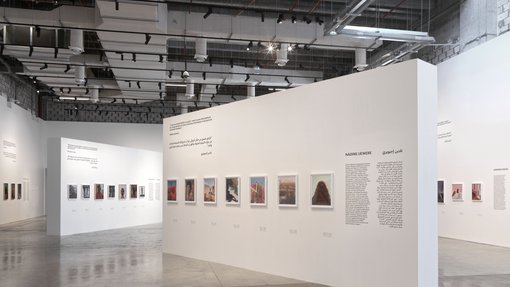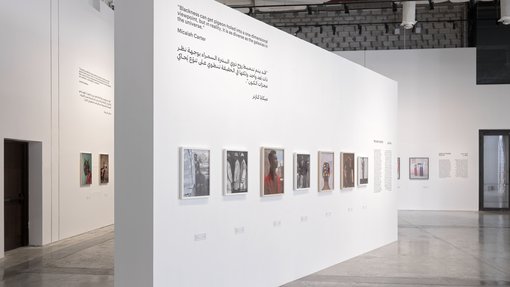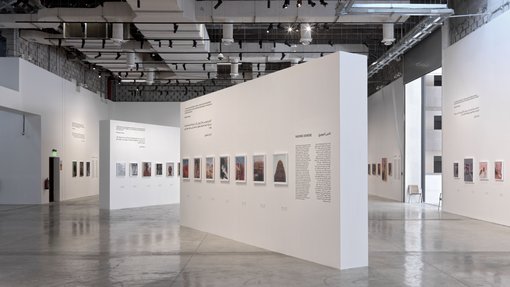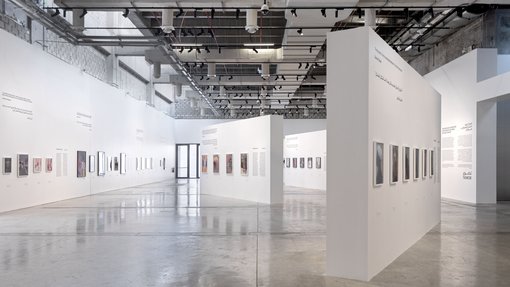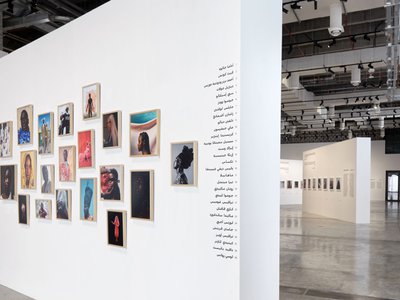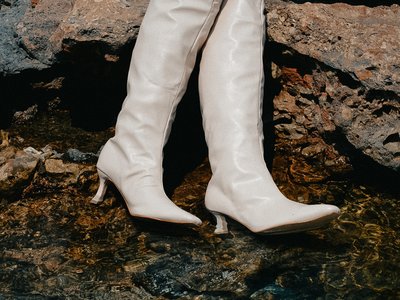Consciously challenging the stereotypes of Black identity, the participating artists counter-argue against homogeneous representation of people of colour. The photographs shown here serve as a form of visual activism. It’s a perspective often seen from this loose movement of emerging talents who are creating photography in vastly different contexts – New York and Johannesburg, Lagos, and London. A salon wall featuring images created by many other young Black photographers signals the expanding presence of this movement in visual culture today. The results – often made in collaboration with Black models, stylists and fashion designers – present new outlooks on the medium of photography, and the notions of race and beauty, gender and power.
The exhibition presents selected works by groundbreaking contemporary artists whose vibrant portraits and conceptual images merge the genres of art and fashion photography in ways that break down long-established image-making boundaries. Their work has been widely consumed in traditional lifestyle magazines, ad campaigns, and museums, as well as on their individual social-media channels, re-infusing the contemporary visual vocabulary around beauty and the body with new vitality and substance. These images open up conversations around the representation of Black bodies and Black lives as subject matters. Collectively, they celebrate people of colour’s creativity and the cross-pollination between art, style, and culture.
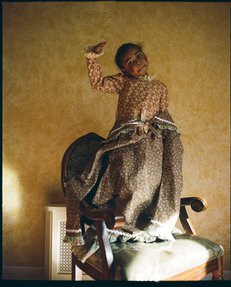
Quil Lemons
When Brooklyn-based photographer Quil Lemons was growing up in South Philadelphia, he made a habit out of carrying around disposable cameras, shooting everything he saw. 'These photos are not just documentation of my life,' says Lemons who studied journalism at The New School in New York. 'The images are advocating, illuminating, and cementing others’ existence.' In 2017, he created Glitterboy, a portrait and interview series featuring Black young men with their faces symbolically awash in glitter against pink backdrops. The series explores shifting notions of beauty as they relate to masculinity in Black communities. 'Glitterboy is autobiographical, as I was coming of age, discovering who I was as an artist and a person,' explains the photographer. Lemons additionally has a profound interest in family portrait photography. Documenting his great-grandmother, mother, and sisters all wearing dresses designed by Batsheva, Lemons images his own family as a way to honour them and explore notions of home, intimacy, and kinship. He says, 'Family is not always biological, but most of the time a feeling, a conformability, a learning, and a continuous growth.'
“ Family is not always biological, but most of the time a feeling, a conformability, a learning, and a continuous growth. ”– Quil Lemons
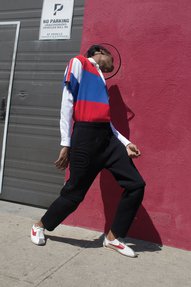
Arielle Bobb-Willis
New York-based photographer Arielle Bobb-Willis was 13 years old and living in South Carolina when a teacher gifted her an old Nikon N80 film camera with which she captured her own body in the privacy of her childhood bedroom. There were pictures of her hands and feet all rendered in colour that were metaphors for identity in free-fall and feelings of fragmentation caused by depression. As her work evolved, Bobb-Willis maintained an interest in exploring what it means to claim joy through periods of sadness. She considers her work ‘anti-selfies’, containing visual complexity with a serene sense of movement and empowerment through a search for the self, inspired by dynamic painters such as the modernists Jacob Lawrence and Benny Andrews.
“ I love the idea of seeing Black people represented in an abstract way. It’s important to me to continue to reject the notion that Black expression is limited — or limiting. ”– Arielle Bobb-Willis
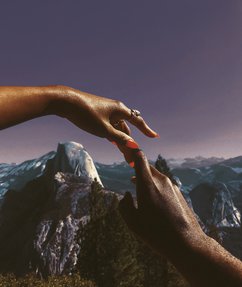
Adrienne Raquel
'My work is heavily influenced by the essence of femininity, and colour is a key inspiration behind my work,' says New York-based art director and photographer Adrienne Raquel. The warm pinks, purples, reds, and yellows that often dominate her frames lend them an energised vibe that has helped Raquel establish her own desirous ‘dream world’. The artist says, 'I believe colour plays a significant factor in our everyday emotions, and most importantly, in how we perceive the world around us. In colour psychology, pink symbolises a sign of hope and ultimately brings forth warm and comforting feelings that offer reassuring emotional energy. Red represents love and passion, violet often symbolises power and nobility, and yellow and orange hues tend to promote joy and creativity. I want my work to evoke these very same emotions — I want my viewers to feel good vibes!' Her fantasy-driven, glamorous images incorporate the languages of landscape, still-life, beauty, and editorial photography. As a Black woman photographing other Black women, Raquel says, 'In my eyes, Black women are truly exquisite subjects. I live for capturing our beauty, our attitude, delicacy, and regality.'
“ As a Black female artist, I make a conscious effort to depict Black women because they are ultimately a reflection of myself. ”– Adrienne Raquel
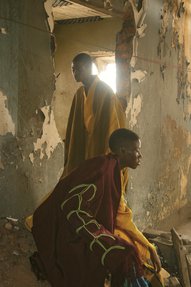
Daniel Obasi
Nigerian-born and Lagos-based stylist, filmmaker, and photographer Daniel Obasi uses local styles as sources of inspiration to achieve what he describes as, 'better visual representations' of disempowered communities within the Nigerian society. 'In my work, I try to create alternatives. It’s a form of activism.' His darkly-lit and boldly-fashioned photography is a reflection of what he calls ‘an Afrofuturist fantasy’ that avoids the kinds of ethnographic depictions of Nigeria made by Europeans. Obasi’s work directly challenges expectations of masculinity. Playing with the fluidity of male identity is an important theme in his photography and films. 'Creating an alternative narrative is my approach to dealing with societal issues,' says Obasi. 'My subjects are seen as beautiful, charming, and in some cases, otherworldly as a way of transferring significance and authority to minorities who are victimised or often ignored within my society. It’s important to create visual stories that portray beauty and positivity.'
“ In my work, I try to create alternatives. It’s a form of activism. ”– Daniel Obasi
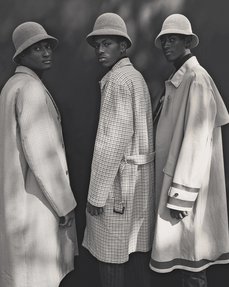
Micaiah Carter
A central inspiration for fashion photographer Micaiah Carter comes from his father, Andrew Carter, a retired Air Force sergeant who came of age in the 1970s, a period defined by the ‘Black is Beautiful’ movement and disco. 'I’m using the past as a compass,' Carter explains, 'while at the same time shooting new trajectories.' Carter, who studied photography at The New School in New York, makes symbol-laden photographs. His way of seeing the Black figure is influenced by his father’s scrapbooks, which in turn led the artist to the documentary images of John H. White. The Chicago photojournalist’s ability to capture his subjects with dignity — no matter their station in life — left an impression on Carter’s image-making. Another influence on the Brooklyn-based photographer is artist Carrie Mae Weems. Of Weems, he says, 'I am in awe of her use of intent, and her initiative to create a love language about the culture and Black experience.'
“ Blackness can get pigeon-holed into a one-dimensional viewpoint, but in reality, it is as diverse as the galaxies in the universe. ”– Micaiah Carter
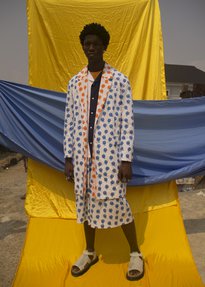
Stephen Tayo
In the staged and spontaneous street-style photography of Nigerian artist Stephen Tayo, local Lagos fashion is always front and center, providing a glimpse into how tradition meets contemporary youth style, generally speaking to the stylisation of everyday life in the Nigerian metropolis. A graduate of the University of Lagos philosophy program, Tayo decided to become an image maker because — as he describes — 'felt the need to document people’s childhoods,' a motivation that arose from the lack of images of his own youth. This desire has evolved from documenting children in the streets and on the beaches of Lagos to capturing the identities of shopkeepers, taxi drivers, and the fashionable youth and elders that are part of the burgeoning metropolitan fashion scene. Tayo’s recent focus on the large biological-twins population in Nigeria is an exploration of their revered status in Yoruba culture, one of the largest ethnic groups in Nigeria. 'This is the life I want to show,' he says. 'My photography series seeks to explore the psychological impact of having to share kinship with and having one’s identity defined by another.'
“ Everywhere in the world, the current generation is keen on just believing in their crafts and pushing for what they love to do.… You see a lot of young people trying to create awareness – from music to fashion to technology – moving toward freedom. ”– Stephen Tayo
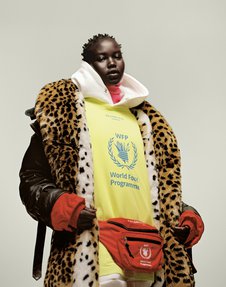
Campbell Addy
'I became a photographer because it’s the visual medium that best fits the message I’d like to put out into the world,' says image maker Campbell Addy. Since studying Fashion Communication and Promotion at Central Saint Martins, London, Addy has made it his mission to give voice and pride of place to overlooked youth cultures through studio and street portraits that probe the intersectionality of identity. 'Fashion has always been a barometer for measuring privilege, power, class and freedom,' he notes. 'To play with fashion is to play with one’s representation in the world.' Showcasing diversity has also led Addy to launch a magazine, Niijournal, and a casting company, Nii Agency, each an extension of the ethos of his photography. 'With my work, the overall message and ideas I am trying to convey are of regality and power,' he explains. 'I also create work that showcases a world that is often forgotten about or disregarded. I want to show the world through the eyes of a Black man in modern society.'
“ With every project and everything I try to do, there’s a sense of educating the viewer. Not necessarily educating for the Black viewer or for the white viewer, but just for people in general. ”– Campbell Addy
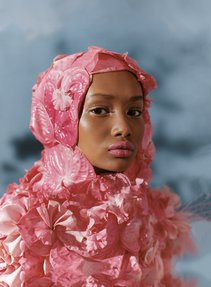
Tyler Mitchell
Photographer and filmmaker Tyler Mitchell creates lightsome images of Black youth culture. Drawing on his childhood in suburban Atlanta, he has created portraits of Black men and women in lush, idyllic green spaces and colour-filled studios that are suggestive, for him, of a Black utopia. In these images, shot with what he characterises as ‘an honest gaze’, his subjects are free from the insult of racism and discrimination and often engage in mundane activities. 'To convey Black beauty is an act of justice,' he says. Mitchell developed his approach to portraiture at New York University’s Tisch School of the Arts where he received a BFA in film and television in 2017. There, he became interested in documenting the style, identity, and beauty of young Black men as a way to synthesise 'what I see to be a full range of expression possible for a Black man in the future,' he explains. In 2018, Mitchell became the first Black photographer to shoot the cover of American Vogue and was listed on Forbes’s 2019 30 under 30.
“ To convey Black beauty is an act of justice. ”– Tyler Mitchell
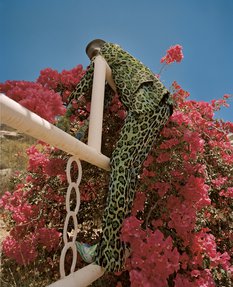
Nadine Ijewere
British-Nigerian photographer Nadine Ijewere disrupts traditional notions of identity and beauty in photography and fashion. 'Growing up reading fashion magazines, I didn’t feel I could relate to the models who appeared in them. I felt that I didn’t have a connection to the imagery,' says Ijewere. 'I want to change that perspective of what beauty is through my work and show that there are different types.' Her editorial and advertising photography, which predominantly features women of colour in lush and fantastic landscapes, articulates the artist’s personal vision. 'I can see myself within my work. I want to give that platform to young women of colour and show that beauty is not just one universal standard,' she says. In 2018, she shot a cover for Edward Enninful’s British Vogue, making her the first Black woman photographer to do so in the history of Vogue’s publications. That same year, Ijewere received a British Fashion Award in the NEW WAVE: Creatives category, and in 2020, was awarded an ICP Infinity Award in Applied Photography, acknowledging the youthful empowerment of her feminine and potent fashion imagery.
“ I can see myself within my work. I want to give that platform to young women of colour and show that beauty is not just one universal standard. ”– Nadine Ijewere
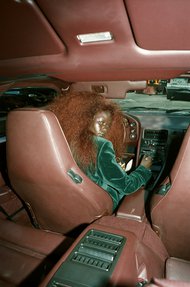
Renell Medrano
Dominican-American artist Renell Medrano has developed a fashion-photography practice in which she often depicts young, glamorous subjects in urban settings. 'I carry this very scenic backstory of my growing up in the Bronx,' she explains. 'I just try to photograph what I see around me and portray that in my images.' Medrano’s intimate and personal vantage point began to manifest while she was an undergraduate student at Parsons School of Design/The New School where she earned her BFA in 2014. The series established Medrano as an image maker interested in the beauty and patina of real-life circumstances. The evocative rawness and psychological intensity of the artist’s documentary photographs, which won her a New York Times Lens Blog Award in 2014, have become her trademarks. Authenticity and imperfection as stylistic choices are also present in her images. 'I don’t really give that much direction when I’m on set,' says Medrano. 'I honestly try and just capture moments within the time that I have with my subject, and that mean something to me.'
“ I never try and make a perfect picture. I just try to photograph what I see around me. ”– Renell Medrano
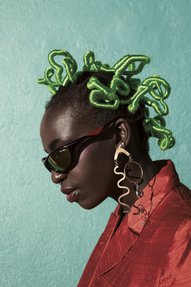
Jamal Nxedlana
South African image maker and creative director Jamal Nxedlana describes himself as a member of 'a generation that reads the world almost exclusively through images.' His style is rooted in an Afrosurrealism, which Nxedlana articulates as 'consciously creating an alternative image repertoire to the repetition of colonial views of Africa' and says serves to destabilise the ‘idea that Blackness is homogenous’. For the artist, the choice of portraying figures that seem to pop out of landscapes is an argument against what he calls ‘uniformity and dominant structures’ and sees as inextricably linked to colonialism and white supremacy. In addition to his photographic work, Nxedlana is the founder of the fashion label Missshape. In 2011, he cofounded CUSS, a Johannesburg-based artist collective that creates collaborative digital and material art, presented in nontraditional spaces as a way to ‘insert art into the everyday’. Nxedlana also cofounded Bubblegum Club, which he defines as 'a cultural intelligence agency and online magazine,' whose goal is to 'help build the self-belief of the talented minds out there in music, art, and fashion, and to consolidate South Africa as a voice in global conversations.'
“ Creating a platform and creating context around our work gives it more value. Firstly, it’s an archival practice, but it’s also a way to bring marginalized and disparate voices together as a network – a strength in numbers. ”– Jamal Nxedlana
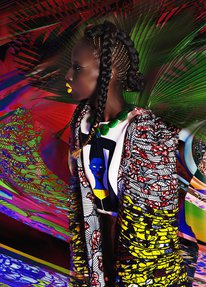
Namsa Leuba
'I have a double origin and a double heritage that serves as my inspiration,' says Swiss-Guinean art director and image maker Namsa Leuba who studied photography and obtained an MA in art direction at ECAL University of Art and Design in Lausanne, Switzerland. In her highly staged images, she explores her own biography by looking at Africa through a Western lens. Her images frequently possess an anthropological quality that draws equally on the language of the fashion editorial, documentary photography, and performance. Her subjects often appear draped in traditional African garments, wearing masks and headdresses, and perched on pedestals as a way to allude to cultural hybridity and Western notions of Africa. Leuba imbues her subjects with notions of power, strength, and nobility. Although she sees her work not as an expression of ‘reality’ but rather as ‘documentary fictions’, her practice is based in research and informed by extensive travels across the African continent.
“ I am inspired by my origins and by new creative exchanges, infusing reality with my own sensitivities and experiences. ”– Namsa Leuba
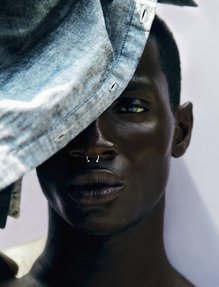
Dana Scruggs
'A Black female photographer capturing other Black people is one of the rarest ratios in photography,' says self-taught image maker Dana Scruggs. She began her career when her images caught the attention of modeling agencies and she was hired for test shoots. 'Photography gave me a purpose when, for the longest time, I’d felt like I had nothing else to offer myself or the world,' she explains. Scruggs’s high-contrast and intimate photographs often depict dark-skinned models and celebrities. With their focus on chiaroscuro, her images continue a heritage that was handed down from the African-American photography collective Kamonige, whose members included Roy DeCarava, Anthony Barboza, and Ming Smith. These artists’ signature black-and-white pictures explore and expand notions of darkness in photographs, culture, and people. Although Scruggs says her work is not a direct statement about colourism in fashion and the Black community, she has sought to fight the cultural stigmas associated with darker skin and bring visibility and opportunities to models and subjects who represent a broad range of skin tones. As the artist stridently remarks, 'The fact that I’m a Black woman capturing Black men is very important to me, because often Black people and Black narratives are captured by white people – sometimes through culture-vulturing initiatives or to fetishise us.'
“ If I hadn’t been posting my work on multiple platforms for years, I would never have had these opportunities. Every moment that I didn’t give in, pack up, and move back home has been critical to my success. ”– Dana Scruggs
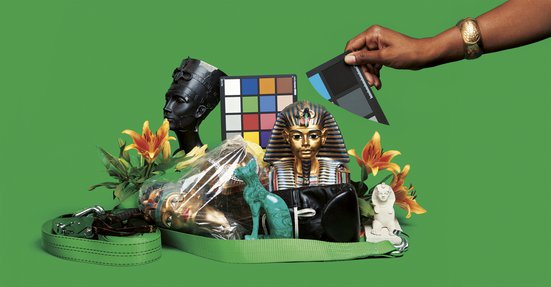
Awol Erizku
The Black figure in both art history and contemporary culture is a central concern in Ethiopian-American artist Awol Erizku’s paintings, sculptures, videos, and photography. A graduate of Cooper Union and Yale University’s School of Art where he studied sculpture in the MFA program, the Los Angeles-based artist has sought to create his own style. His portraits, which range from traditional to conceptual, seek to create a ‘new vernacular’ through the use of art historical references and recurring symbols that focus the viewer’s gaze on the Black figure and redresses a history of images that are rarely seen. African masks, Nefertiti, flowers, black panthers, basketballs, and Kodak ‘Shirley’ cards, meant to disrupt traditional hierarchies by evoking ‘universal Blackness’, appear in his still lifes. They celebrate Erizku’s identity and offer a tribute to Black music and culture, as well as allude to the influence of the artist David Hammons on the artist’s practice.
“ I am trying to create a new vernacular – Black art as universal. ”– Awol Erizku
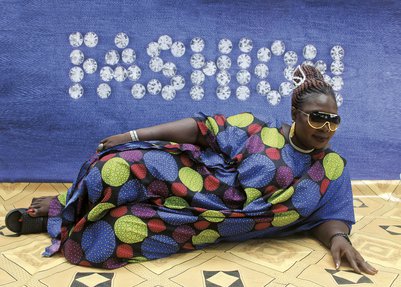
Ruth Ossai
When British-Nigerian image maker Ruth Ossai was a teenager, she received a point-and-shoot camera from her mother. Her early photographs – a way of documenting and bridging the two worlds of her youth – led to a photography practice that often features her family members in elaborate, playful, and fashionable studio portraits. Ossai’s images often evoke the African studio portraiture of the 1960s created by such artists as Sanlé Sory in Bobo-Dioulasso, Burkina Faso, West Africa and Malick Sidibé in Bamako, Mali. She considers the works ‘artistic prisms’ that show everyday life and people in Southeastern Nigeria, informed by traditional Igbo music videos of the Igbo people, homemade DVDs of weddings and funerals, and Nollywood films. These influences are often evident in the artist’s signature printed and painted studio backdrops, as well as in the clothes her subjects wear. 'The photographs are free from tricks – not glossy – and raw,' she says. 'None of them are elite centric, none of it cares for upper-class sensibilities. With my work, I try to show the strength, tenacity, and ingenuity of my subjects, to celebrate identity, whether that’s in the UK, Nigeria, or elsewhere.'
“ The beauty of photography is it starts a dialogue about who we are, where we come from, and where we are going. ”– Ruth Ossai
The New Black Vanguard: Photography Between Art and Fashion
The New Black Vanguard: Photography Between Art and Fashion represents a global movement of image makers working internationally across the African diaspora, using their cameras to create contemporary portrayals of Black life that re-frame established representational paradigms. This community of photographers produces images that manifest the significance of the Black figure — and even more radically, the Black creator — as a new ideal in contemporary culture. Their photographs of Black models — whether professionals or cast from the photographers’ families, the street, or Instagram — and celebrities draw on such genres as portraiture and documentary, and conceptual and still-life photography, bringing in a whole new set of references and Black aesthetics as a way to introduce innovative possibilities for the fashion image.
The New Black Vanguard: Photography Between Art and Fashion — initiated and organised by Aperture Foundation, New York — is curated by Antwaun Sargent with curatorial support from Tasweer’s Charlotte Cotton and Sarah Foryame Lawler.
